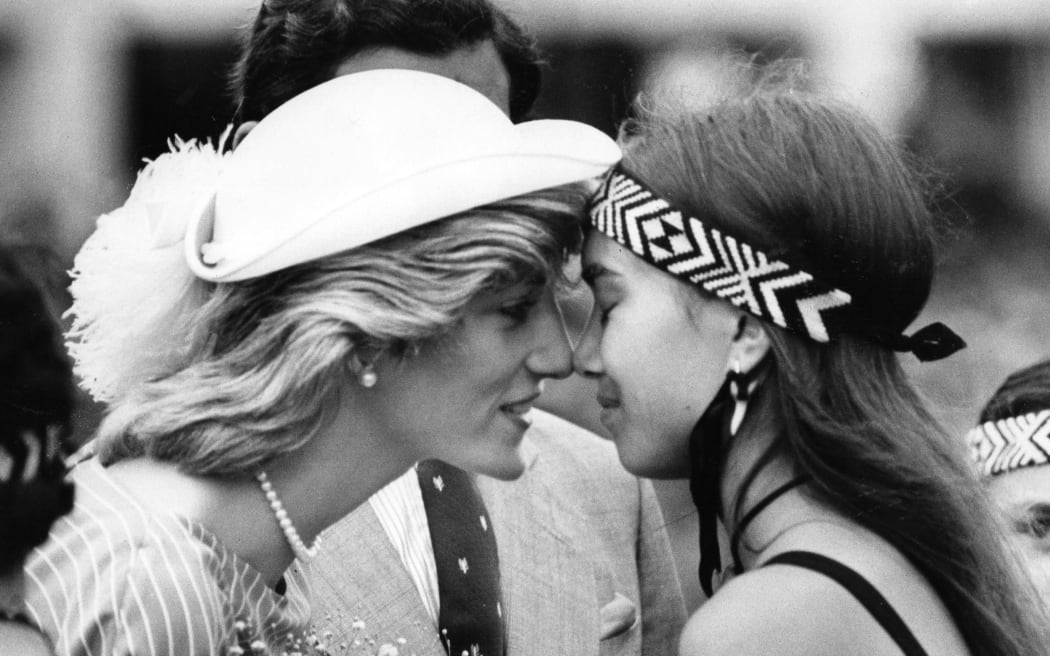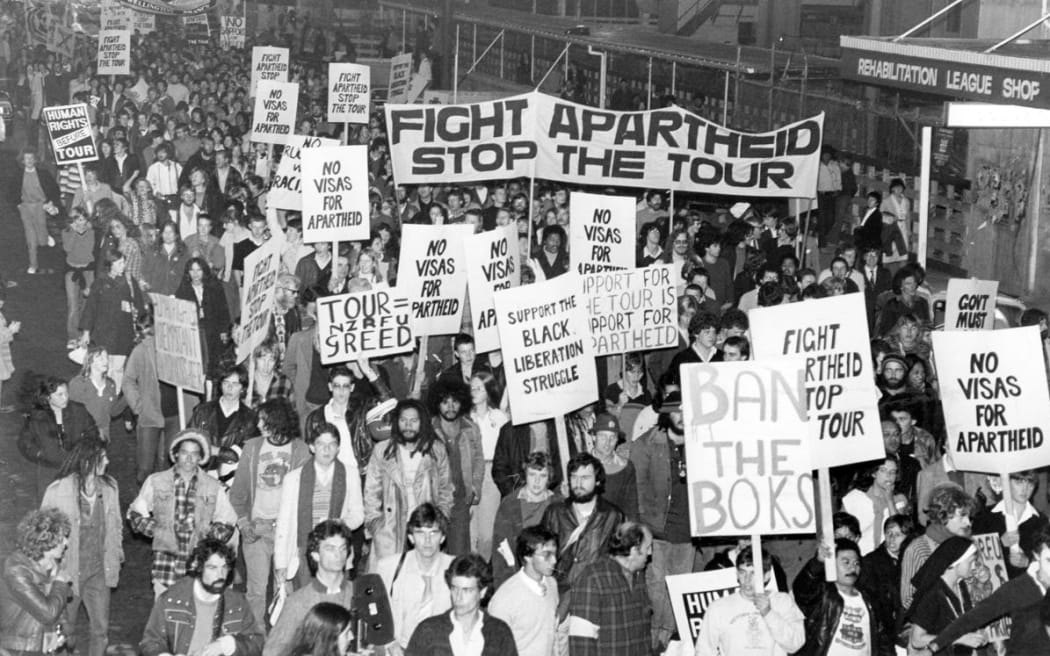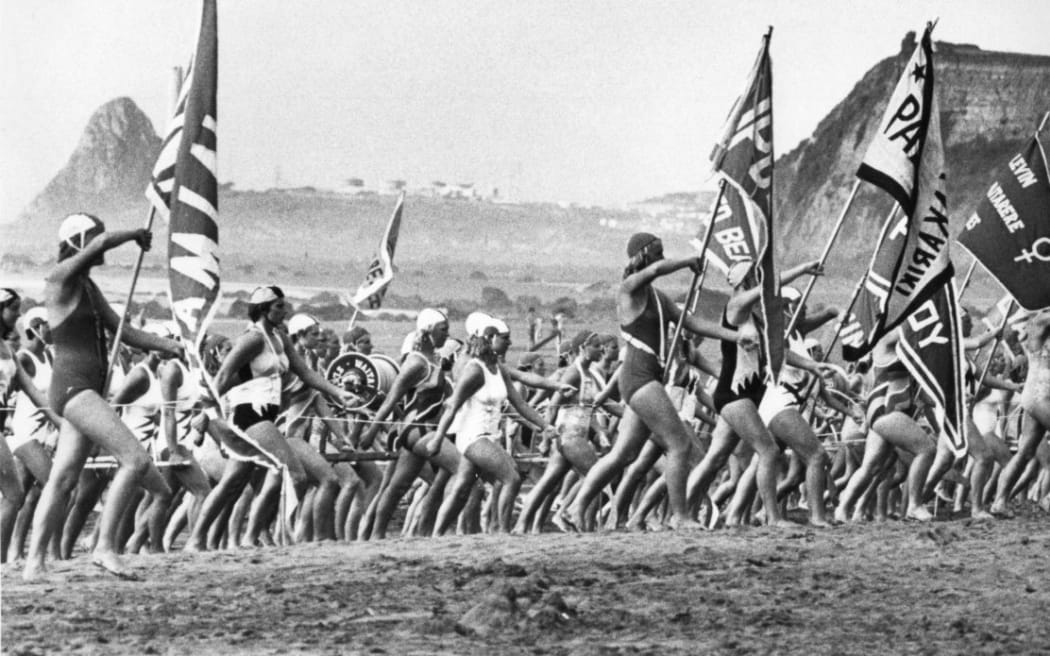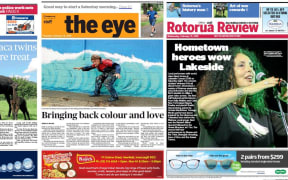
Diana, Princess of Wales, hongis a young woman at Eden Park during the Royal visit in 1983. Photo: Duncan Miller Gallery
Thousands of photos of Māori life from the early 20th century have been brought back into New Zealand hands by the National Library, after nearly ending up in an American landfill.
They are part of a wider archive of 1.4 million photographs from 20th century New Zealand, owned by Australian media company Fairfax and taken by photographers with regional papers such as The Dominion Post and The Press, which until 2020 were owned by Fairfax.
The photos were sent to the United States to be digitised in 2013, but taken as collateral by a bank when the digitisation company went under, and became destined for the landfill.
They were saved by the Duncan Miller Gallery in Los Angeles, which got a call at the final hour in a last-ditch effort to find the photos a home. The gallery's website describes it as "fine art photography gallery specializing in 20th and 21st Century photographic works".

Protesters against the 1981 Springbok tour march through Wellington. Photo: Duncan Miller Gallery
For three years, the gallery worked to sort, label and restore the photos, which had been poorly stored in outdoor containers, with black mould creeping in.
"To me, I saw this as a history of a country," Daniel Miller said. "We had to just figure out how to do it. Am I sad that no Kiwi stood up and said, 'I'm going to do that for you'? Sure I am. But I was here, and I saw the material, and I thought, this can't be destroyed, that would be crazy."
The collection of 5300 images of tangata whenua was independently valued at $340,000, but Miller said the National Library had got it for less than that.
It includes images of land rights leaders Dame Whina Cooper and Eva Rickard, artists such as Rangimarie Hetet, entertainers Billy T James, Dalvanius Prime, Howard Morrison, Rawiri Paratene and Tina Cross, activist Titewhai Harawira taken by Gil Hanly, Dun Mihaka and Tame Iti, writers Patricia Grace, Michael King, Hone Tuwhare and Witi Ihimaera, alongside images of politicians such as Koro Wetere, official ceremonies and images of the Māori royal family.
They show the Bastion Point occupation and protests, political conflict at Waitangi and the 1992 Referendum on Fisheries, as well as the lives and issues of everyday people, often identified by name.
Sophie Coupland, a New Zealand art valuer who assessed and categorised the entire collection of photographs of Māori, said the images also featured key details on the subject and events on the reverse side.
"They often appear with the original newspaper article which gives them greater historical context and meaning," she said.
"Language use is a sensitive barometer of social and cultural development and these images together with the articles and texts associated provide valuable insights into how Māori have been viewed and presented, reflecting the prevailing attitudes of writers and editors."

One of the images shows the 1981 national surf lifesaving championships, held at Ōakura Beach near New Plymouth. Photo: Duncan Miller Gallery
The bigger story
But the images of Māori are part of a much larger collection - according to Miller, one of the largest in New Zealand history, covering a span of 183 years from 1840 to 2005 - and the gallery was struggling to find homes for the rest of the photos.
Among them are shots of pre-World War II military training camps for high school students, the construction and eventual dismantling of Auckland's electric tramway system between 1900-1982, life in the Chatham Islands between 1910-1991, and portraits of leading New Zealand architects.
There is a picture of Sir Edmund Hillary and Tenzing Norgay after their ascent of Mount Everest; photos of the sinking Rainbow Warrior; the devastation of the Napier Earthquake in 1931; Princess Diana at Eden Park in 1983.
"On and on, we're just searching for the best possible homes because no one in New Zealand apparently can take this whole collection," Miller said.
The process had not been a money-making exercise for the gallery.
"We are not swimming in money on this thing, we are not in the black yet," Miller said.
To fund the restoration and repatriation work, the gallery has opened its own auction house.
The average auction value was NZ$100 -$200, and the photos had been run past libraries and other potential owners before they made it to public auction.
Miller said at the end of the day, the photos needed to be back in New Zealand.
"I wish we could find one person [who] would stand up and say, we can do this, bring this here. It would be my happiest day that we could sell the warehouse in the US and be able to ship all these things to one responsible party in New Zealand," he said.
"It is crazy that an American is dealing with this stuff - it should all be in Kiwi hands."





